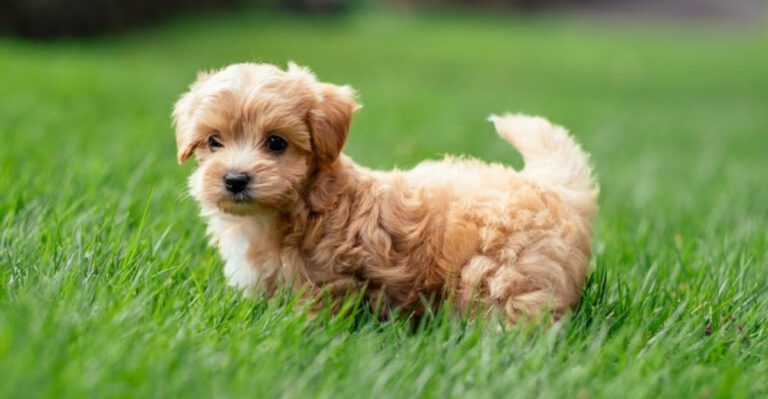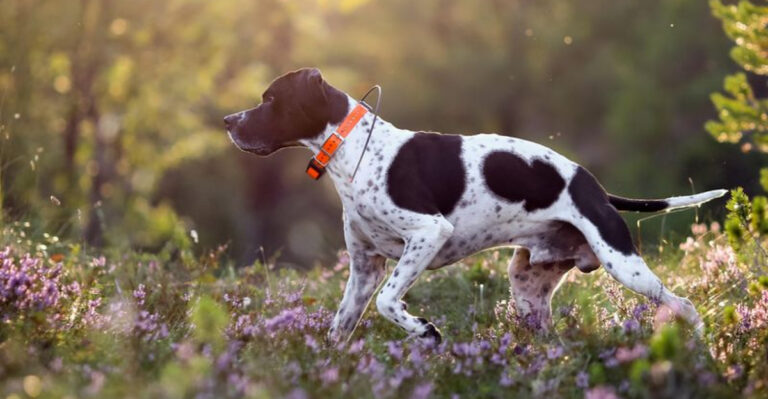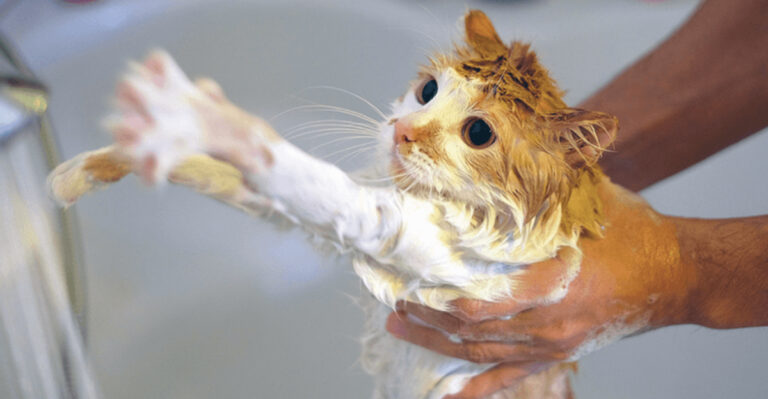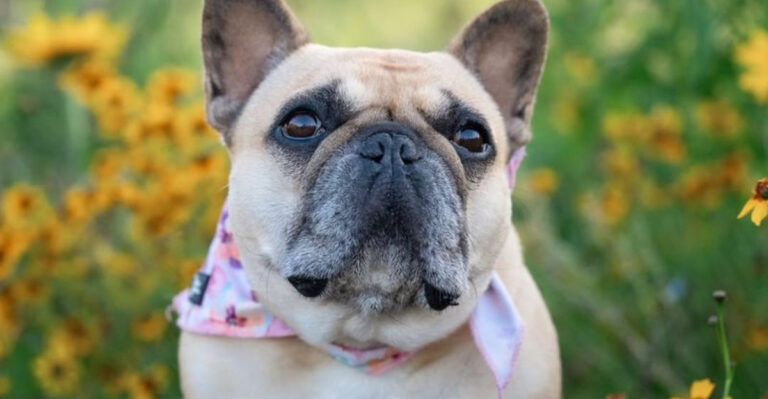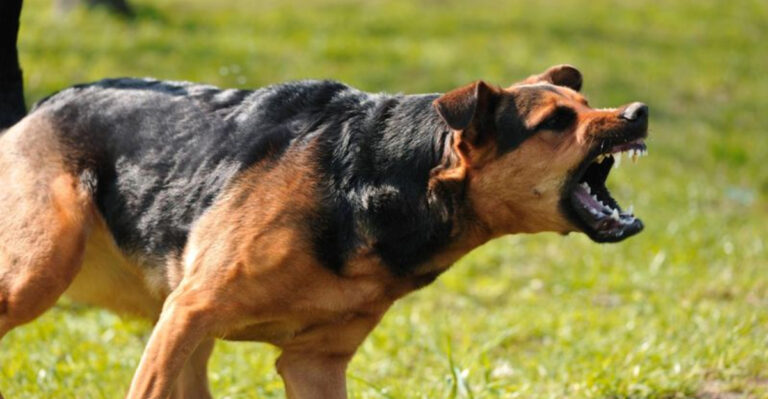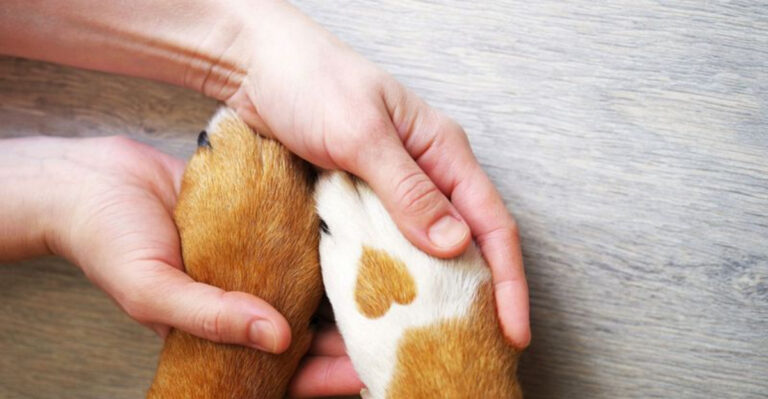22 Dog Breeds With The Most Unique And Eye-Catching Tails
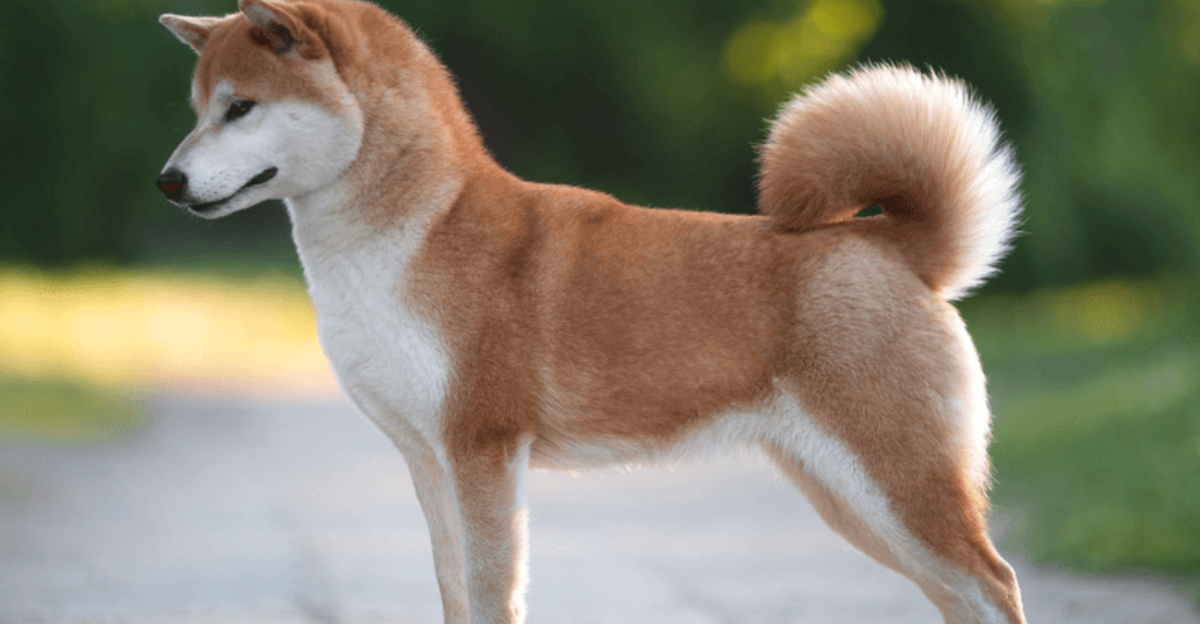
Dogs are not only known for their wagging tails but also for the unique characteristics each breed possesses, especially when it comes to their tails.
From curly and fluffy to long and elegant, the variety in dog tails is as diverse as the dogs themselves. Whether you’re a dog enthusiast or just curious, these fascinating tails are sure to captivate your interest.
1. Norwegian Lundehund
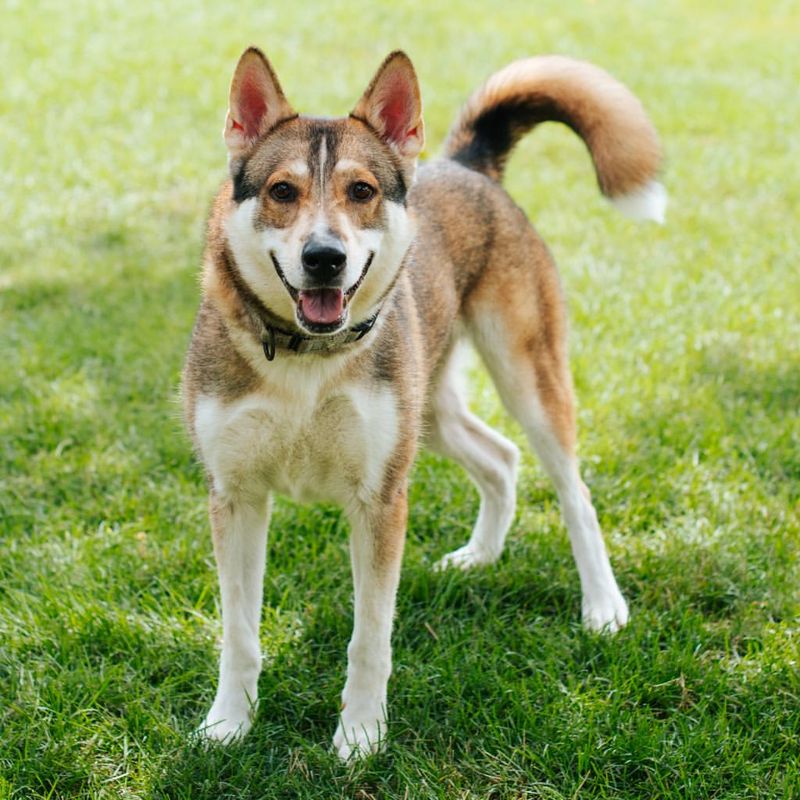
The Norwegian Lundehund has one of the most unique tails in the dog world. It is typically carried curled over its back and has a distinct “S” shape. This tail, combined with the dog’s six toes per foot, makes it specially adapted for its historical purpose of puffin hunting in rugged, rocky landscapes.
The tail helps with balance as the dog climbs steep, uneven surfaces. The tail’s curl is also an expressive feature, making the Lundehund’s tail one of the most iconic in the canine world.
2. Komondor
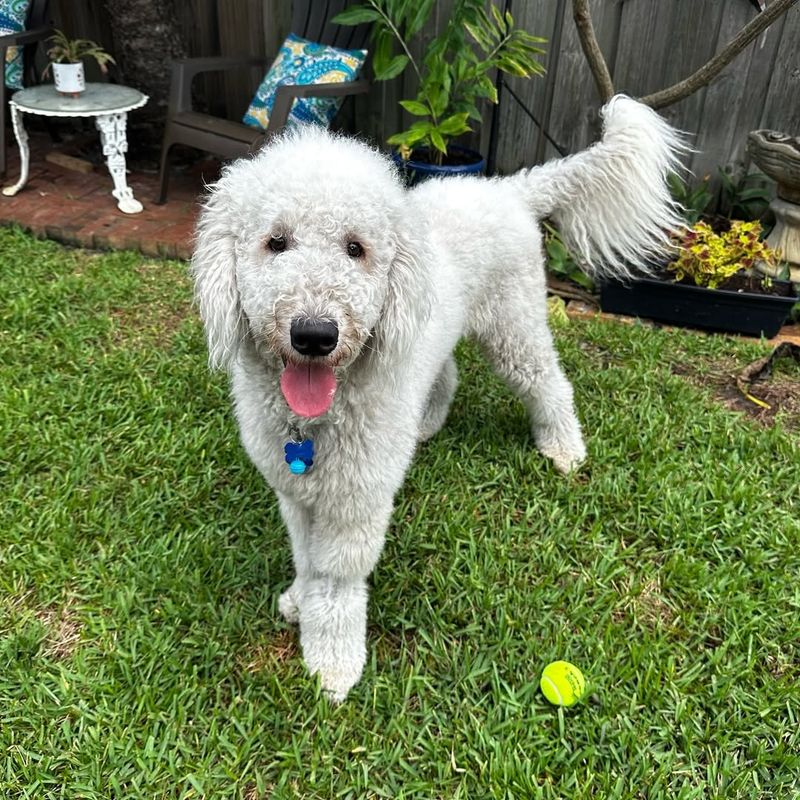
The Komondor’s tail is typically carried in a slight curve over its back. Its thick, corded coat gives it a distinctive look, and the tail adds to the breed’s imposing, rugged appearance. The tail is not particularly long, but it is thick and strong, serving as an important part of its herding heritage.
The breed’s tail is used to express various emotions, like other dogs, but it also helps with balance and maneuverability when working with livestock.
3. Basenji
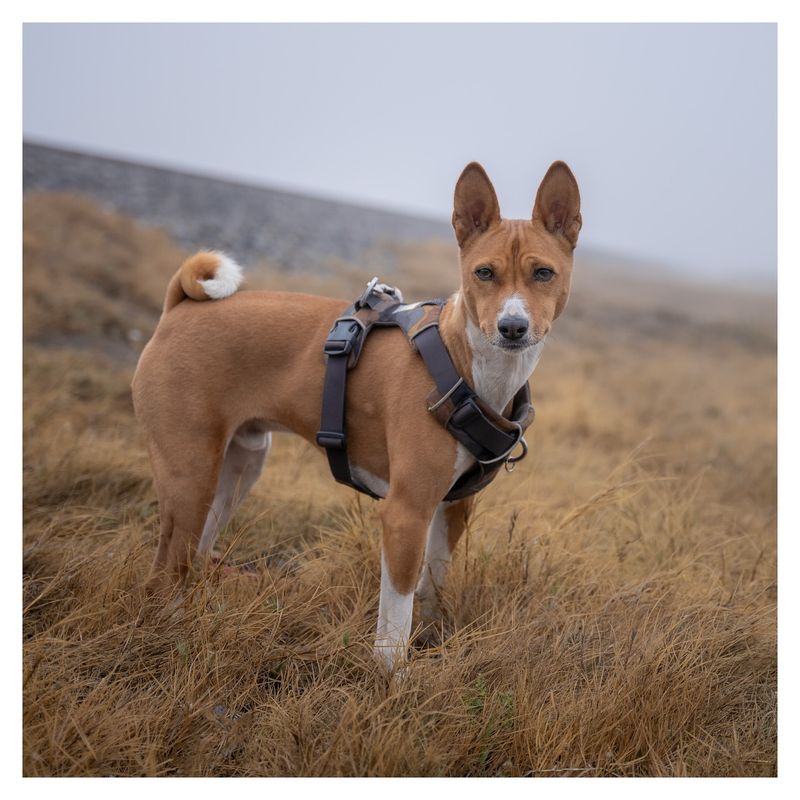
Known for its striking tail, the Basenji’s is tightly curled over its back, adding to its sleek and elegant appearance. This spiral tail is not just for show; it’s a characteristic that represents the breed’s keen, alert nature.
Often seen in a proud arc, it reflects the Basenji’s confident stance and energy. The tail also serves as an expressive feature, wagging with excitement or curiosity, making it a key element of the Basenji’s overall look.
4. Akita
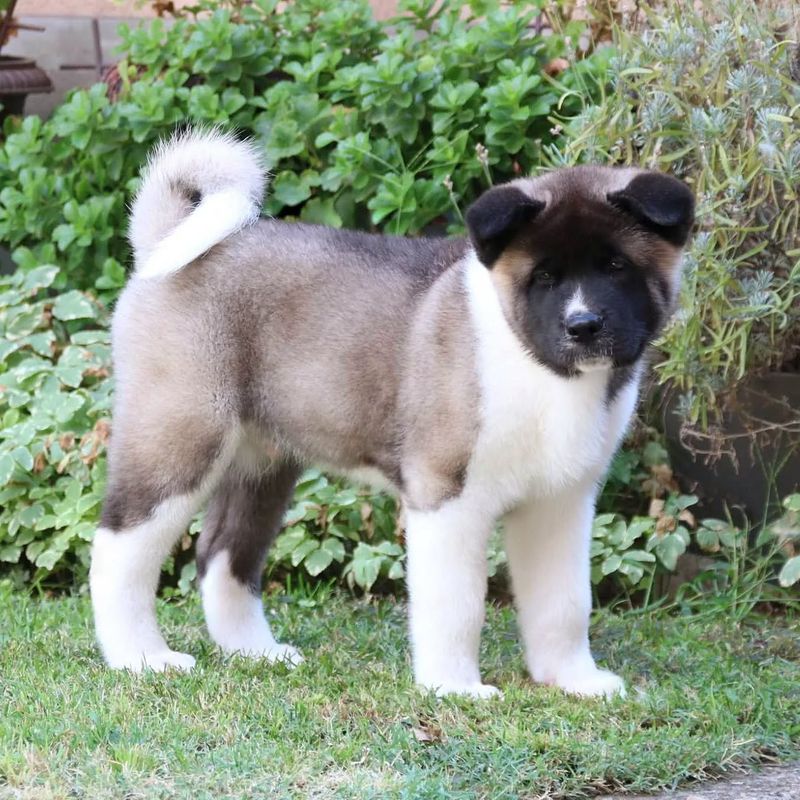
With its thick, curled tail resting proudly over its back, the Akita exudes a sense of strength and dignity. Its tail is a defining feature of this majestic breed, emphasizing its noble stature and powerful build.
When the Akita is alert, the tail is carried high, signaling its readiness and alertness. The tail’s graceful curve only adds to the breed’s grand, imposing presence, making it one of the most distinctive features of the Akita.
5. Shiba Inu
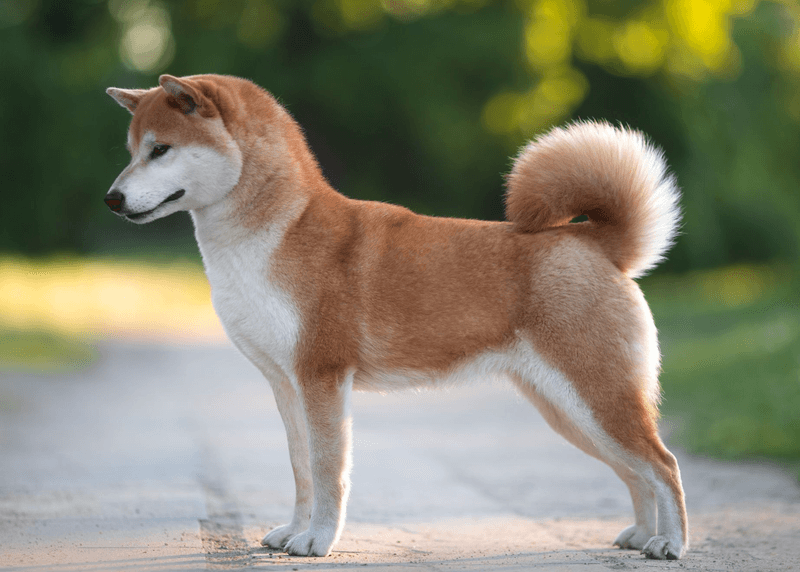
A tail that curls tightly over the back is one of the Shiba Inu’s most endearing features. This tail, often described as fox-like, enhances the breed’s proud and independent appearance.
When the Shiba Inu is content, the tail rests gently over its back, but when excited or curious, it rises and curls more tightly, showcasing its dynamic and alert personality. It perfectly complements the breed’s compact yet confident frame.
6. Samoyed
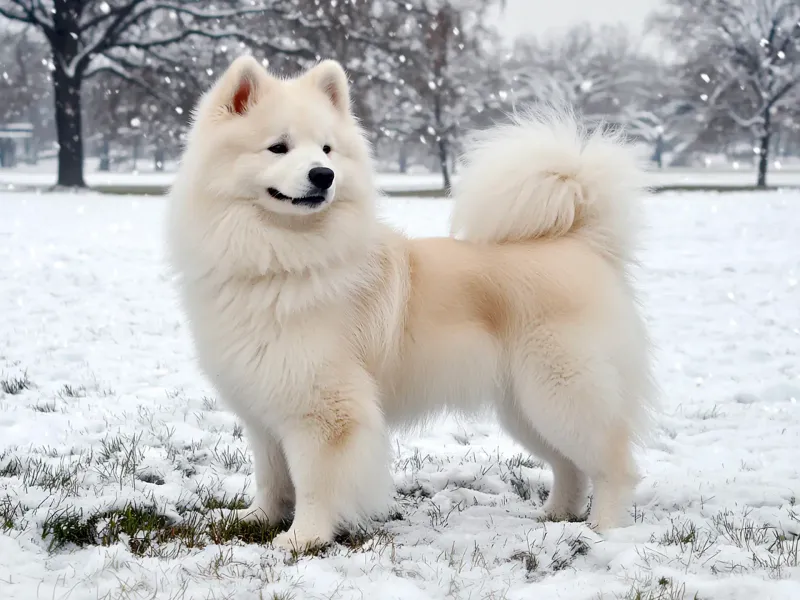
Fluffy, thick, and carried high over the back, the Samoyed’s tail adds to the breed’s “Sammy smile.” It’s a key part of the breed’s friendly and cheerful nature, often wagging joyfully as the Samoyed interacts with people and other animals.
The tail’s luxurious fur adds to the dog’s cloud-like appearance and is functional as well, helping to keep the dog warm in cold climates.
7. Chow Chow
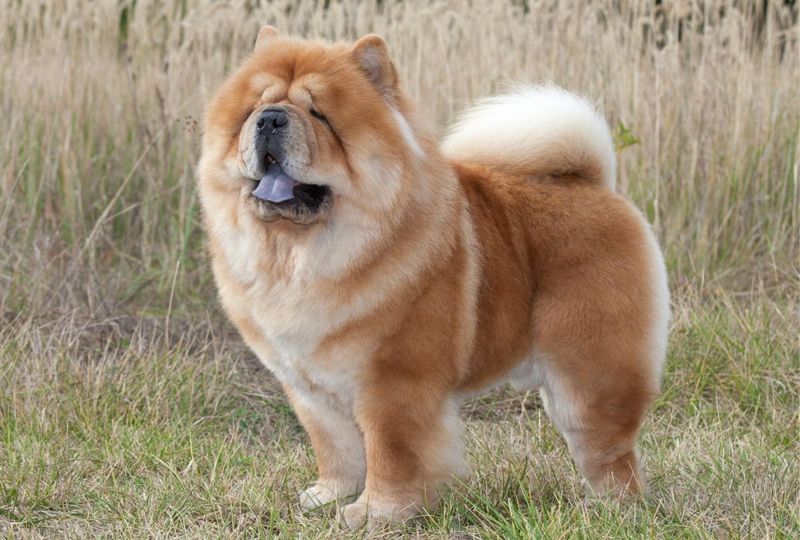
Known for its lion-like appearance, the Chow Chow’s tail is thick and furred, held in a distinct curl over its back. This feature is as regal as it is functional, providing warmth to the dog’s back and helping to enhance its imposing presence.
The tail, which sits neatly over the breed’s back, reflects the Chow Chow’s dignified and reserved nature, making it one of the most iconic features of the breed.
8. Pomeranian
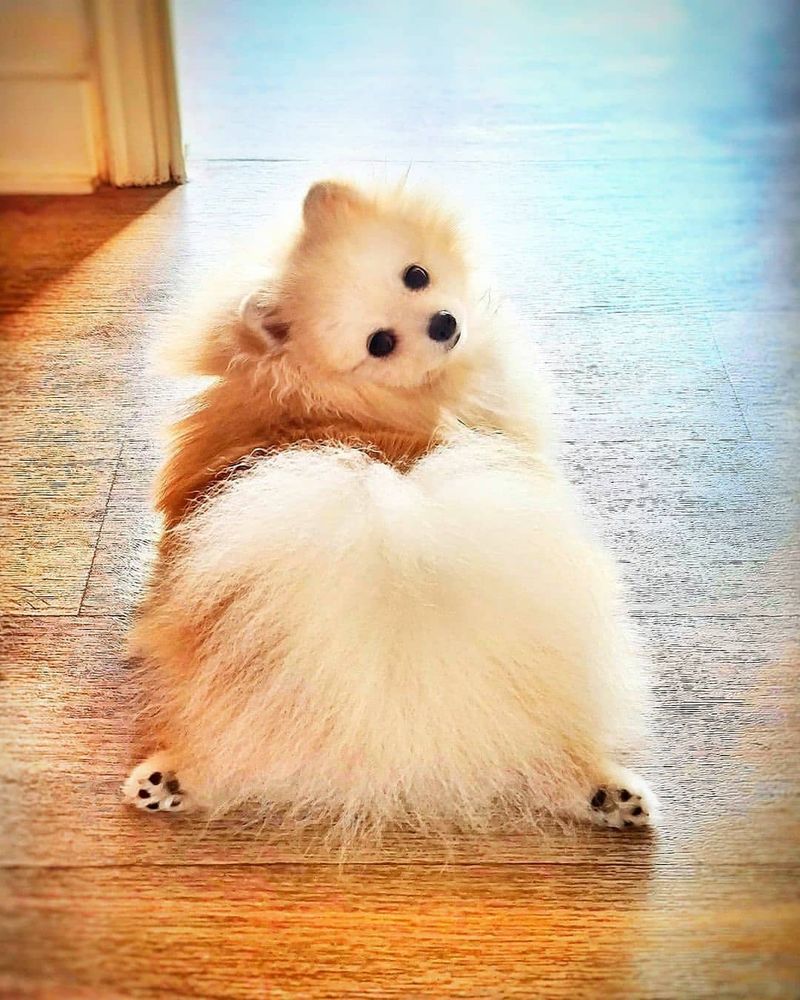
A Pomeranian’s tail is fluffy, full, and held proudly over its back in a perfect curl. This small but mighty tail helps define the Pomeranian’s bold and energetic personality, making the dog appear even more lively and alert.
The tail’s fullness adds to the breed’s overall cute and fox-like appearance, often creating a striking contrast with the dog’s small size. It’s a tail that commands attention and perfectly reflects the breed’s spirited nature.
9. Alaskan Malamute
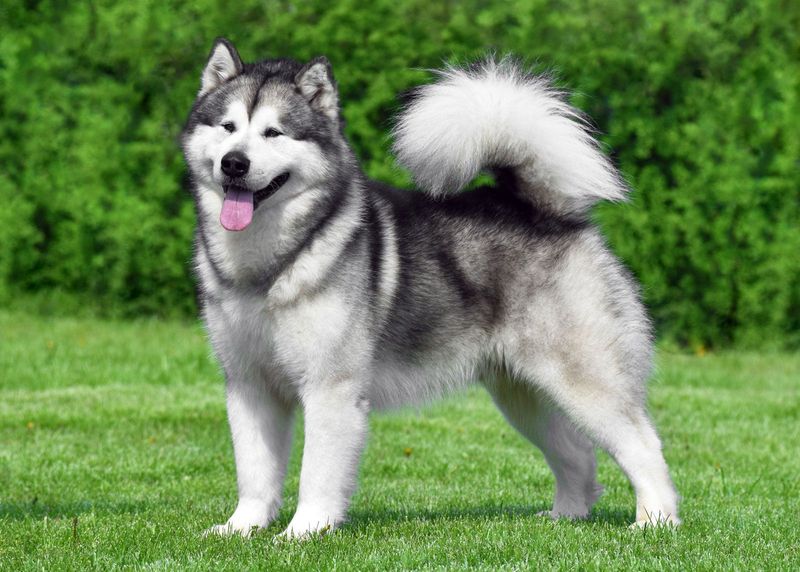
The bushy, thick tail of the Alaskan Malamute is carried high and over its back, contributing to the breed’s strong and resilient look. Known for its stamina and strength, the tail serves both a practical and aesthetic function.
It’s not only a visual highlight of the breed’s proud stature but also provides warmth and protection against harsh Arctic conditions. The tail is often seen as a sign of the Malamute’s alertness, carried proudly during both work and leisure.
10. Keeshond
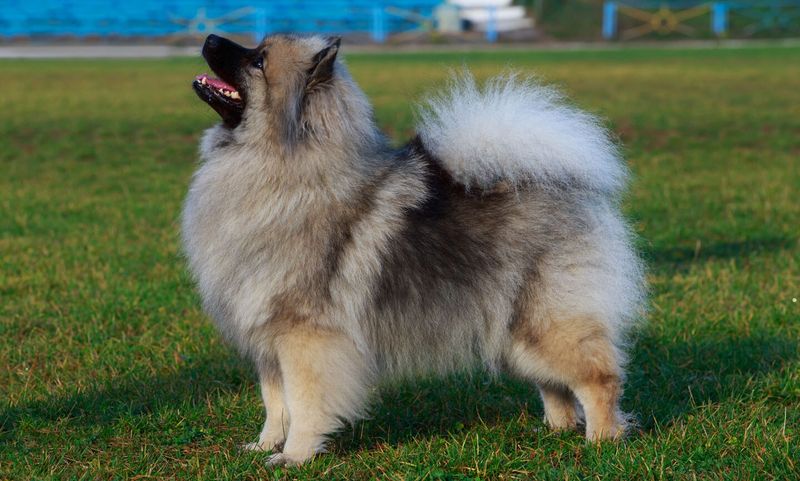
Characterized by its lush, plume-like tail, the Keeshond’s tail is often carried over its back in a gentle curve. This tail is a prominent feature of the breed’s “smiling” expression, complementing its thick double coat.
The Keeshond’s tail not only adds to its fox-like appearance but also conveys its friendly and affectionate personality. It’s a tail that reflects the breed’s spirited and lively nature, wagging with joy when interacting with family and friends.
11. Finnish Spitz
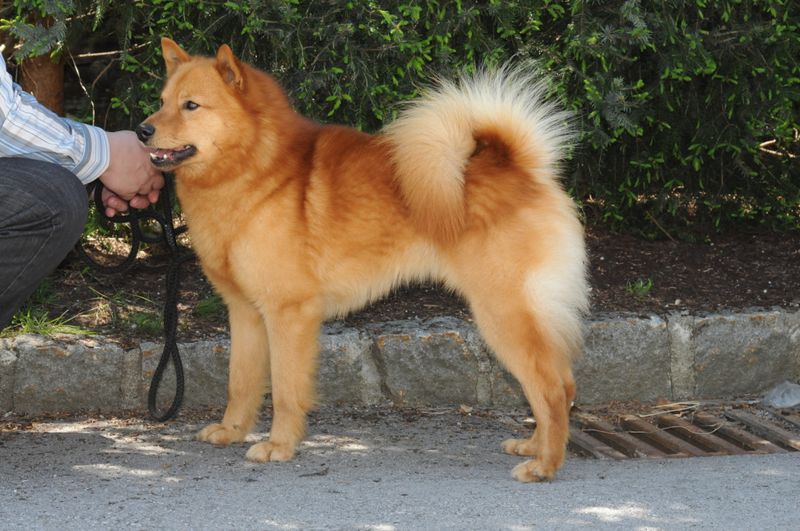
The Finnish Spitz’s tail is carried high and curled over its back, contributing to its alert and fox-like appearance. This breed’s tail, thick and full of fur, acts as an expression of its energetic and playful personality.
When the Finnish Spitz is excited or on alert, the tail rises even higher, showcasing its enthusiasm. The tail is a central part of the breed’s overall look, perfectly capturing its lively and alert nature.
12. Borzoi
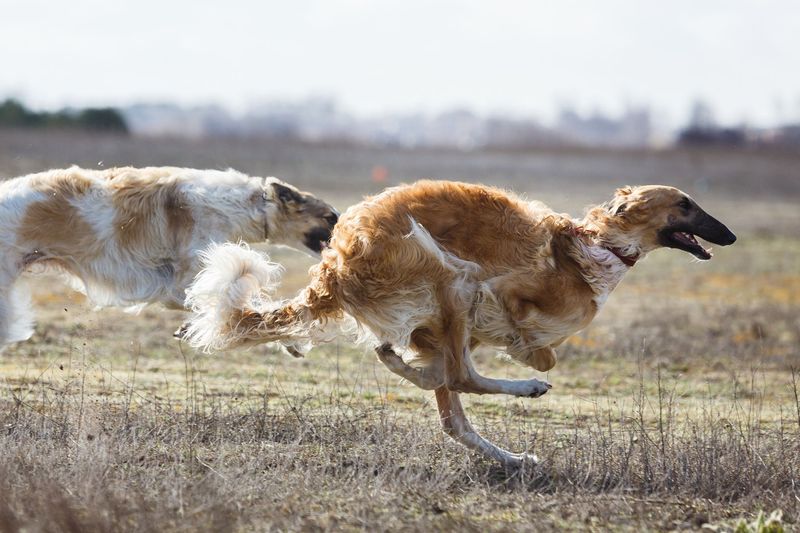
The Borzoi’s tail is long, slender, and gracefully carried low or in a slight curve, reflecting the breed’s elegant and noble stature. This regal tail is one of the defining features of the breed, complementing its sleek body and quiet, calm demeanor.
The Borzoi’s tail adds to its graceful movement, often flowing behind it in smooth, fluid motions as it glides effortlessly through its environment.
13. Cavalier King Charles Spaniel
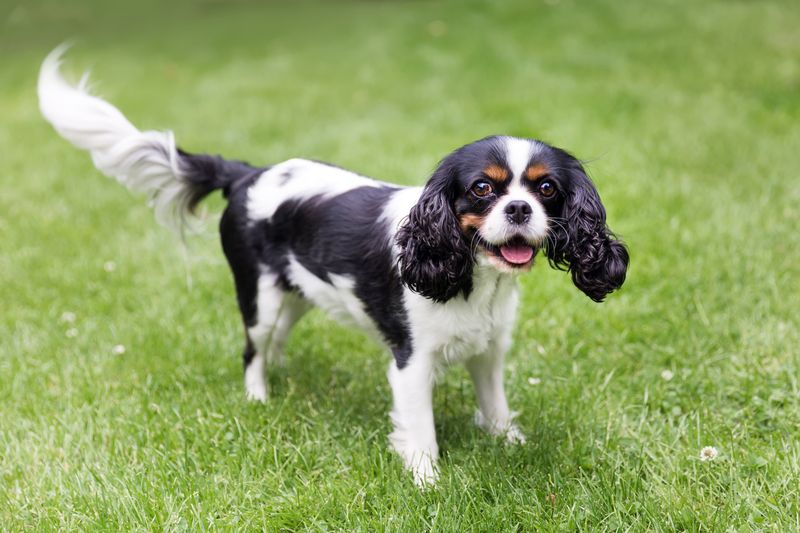
The tail of the Cavalier King Charles Spaniel is long, feathered, and held in a gentle curve. It’s a key part of the breed’s cheerful and friendly expression, often wagging with excitement or affection.
The tail, which adds to the breed’s graceful appearance, is an extension of its loving and social nature, making this little dog even more endearing to its family and friends.
14. Shih Tzu
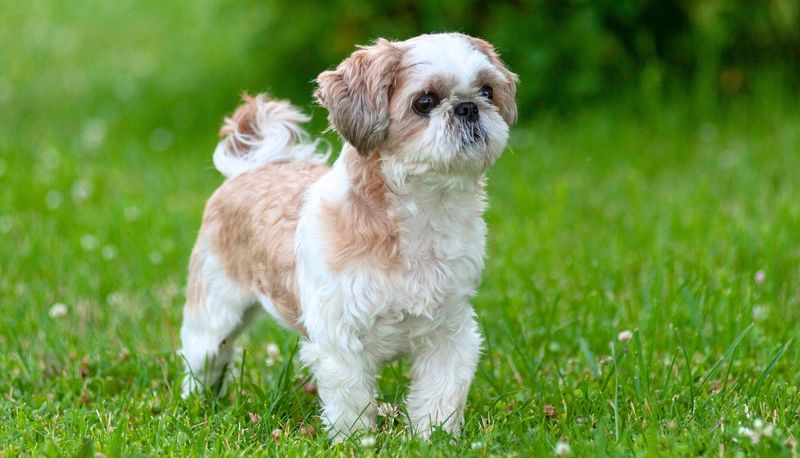
The Shih Tzu’s tail is carried high and curved, often resting over its back with a soft plume of fur. This tail is a striking feature of the breed’s charming and regal appearance.
The Shih Tzu’s affectionate and playful nature is reflected in its tail, which wags enthusiastically when interacting with people. It adds to the dog’s overall cuteness and is a significant part of its lovable, endearing look.
15. Irish Wolfhound
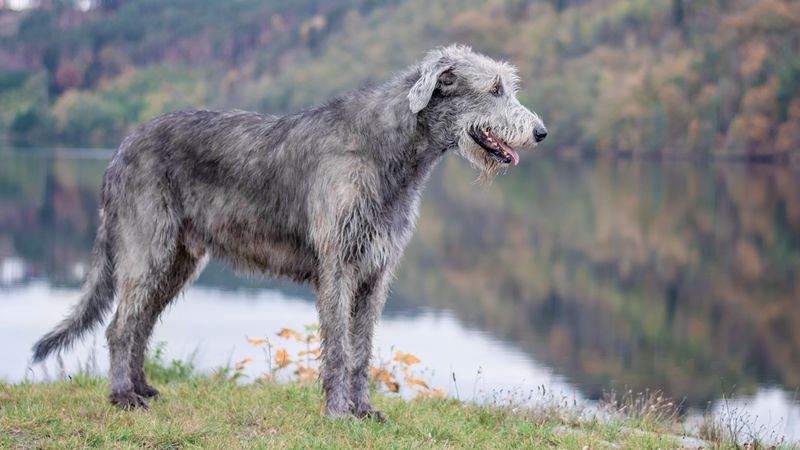
The tail of the Irish Wolfhound is long and thick, typically carried low with a gentle curve. It reflects the breed’s calm and noble demeanor, contributing to the overall dignified appearance of the dog.
When excited or alert, the tail may rise slightly, giving the Irish Wolfhound a more expressive and lively look. The tail’s strength and size match the breed’s impressive stature and calm nature.
16. Newfoundland
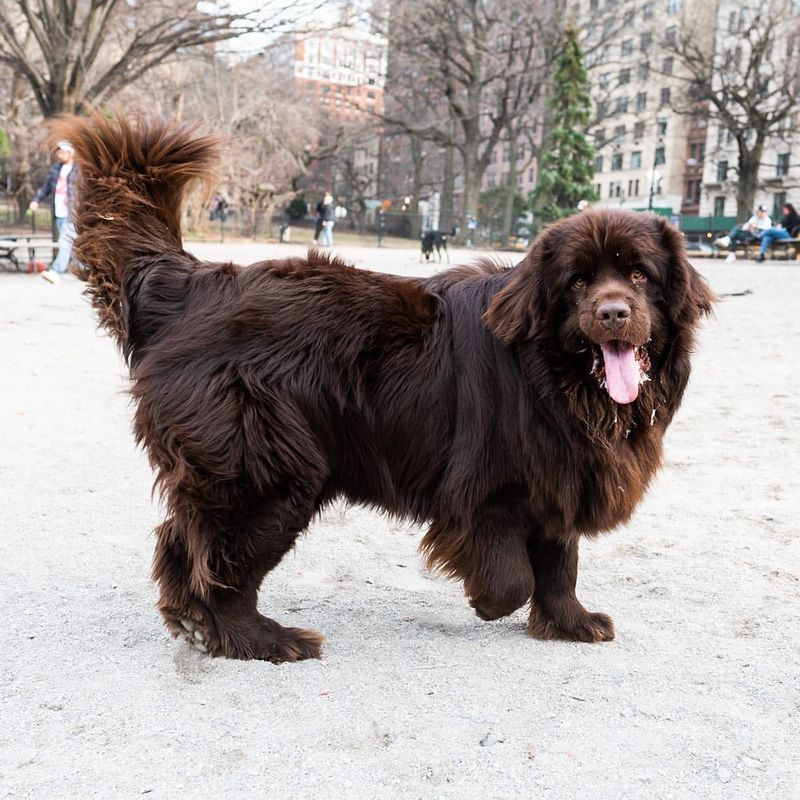
The Newfoundland’s tail is thick and muscular, carried low or slightly raised. It’s an important feature that complements the breed’s large, sturdy build.
Often used as a rudder when swimming, the tail is an essential tool for this water-loving breed. The tail adds to the Newfoundland’s overall strong and sturdy appearance, reflecting its hardworking and gentle nature.
17. Whippet
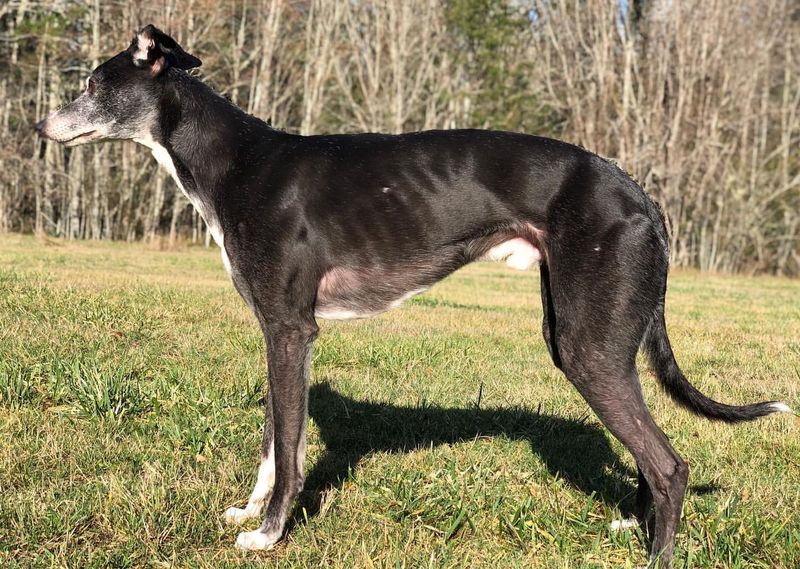
The Whippet’s tail is long, slender, and tapered, often carried low and with a slight curve. This tail is a key feature of the breed’s sleek, athletic build.
Known for their speed, the Whippet’s tail helps with balance while running at high speeds. It’s an important part of the breed’s grace and agility, complementing the Whippet’s streamlined body and swift movements.
18. Old English Sheepdog
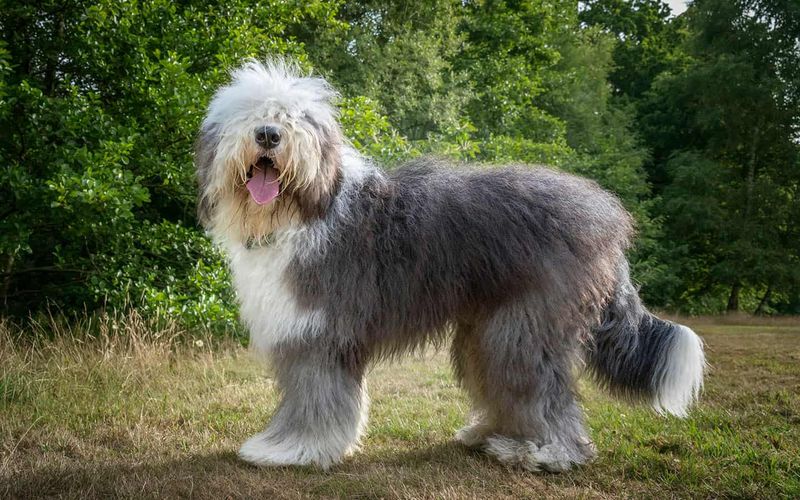
The Old English Sheepdog’s tail is thick and bushy, often carried low or gently curved. This tail, paired with the breed’s long, shaggy coat, adds to its charming and endearing look.
Despite their size, these dogs are known for their playful and affectionate nature, and their tail is frequently seen wagging enthusiastically when they’re engaging with their family. The tail also plays a role in maintaining balance, especially when working with livestock.
19. Beagle
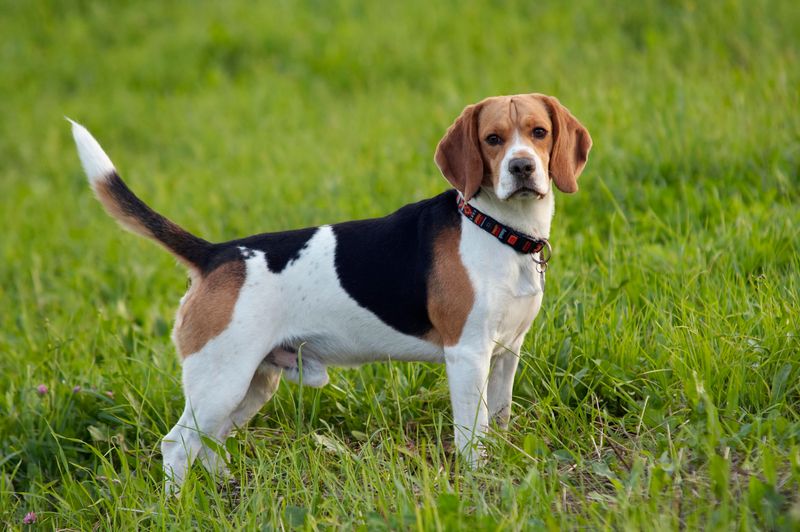
The Beagle’s tail is medium-length and carried high with a slight curve, often wagging energetically. This tail is a characteristic feature of the breed, enhancing their alert and inquisitive expression.
Beagles are known for their strong scenting ability and keen hunting instincts, and their tail helps signal their enthusiasm during both play and work. Their wagging tail is also an indicator of their friendly, social personality.
20. Australian Shepherd
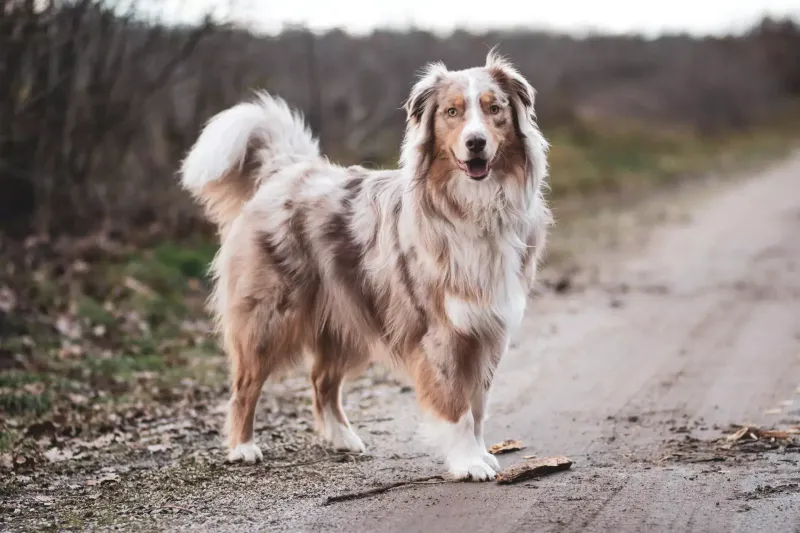
The Australian Shepherd’s tail is often moderately long and carried low or with a slight curve. It’s a defining feature of the breed, reflecting their energetic and hardworking nature.
The tail can be seen wagging as the dog is engaged in herding activities, signaling their focus and drive. The Australian Shepherd’s tail enhances its agile movements and energetic personality, complementing its athletic build.
21. Greyhound
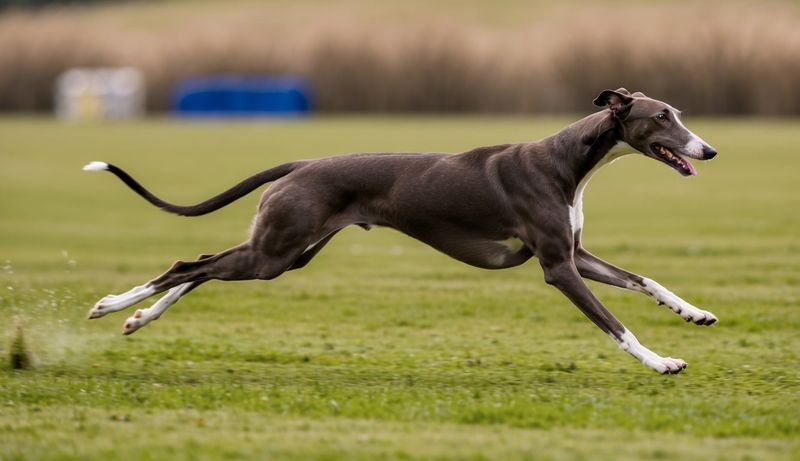
The Greyhound’s tail is long, slender, and tapered, typically carried low with a gentle curve. It’s a key part of the breed’s streamlined, elegant appearance.
While Greyhounds are known for their incredible speed, their tail helps maintain balance during their swift movements, often extending straight behind them when they’re running. The tail also serves as an expression of the dog’s calm and relaxed demeanor when they are resting.
22. Siberian Husky
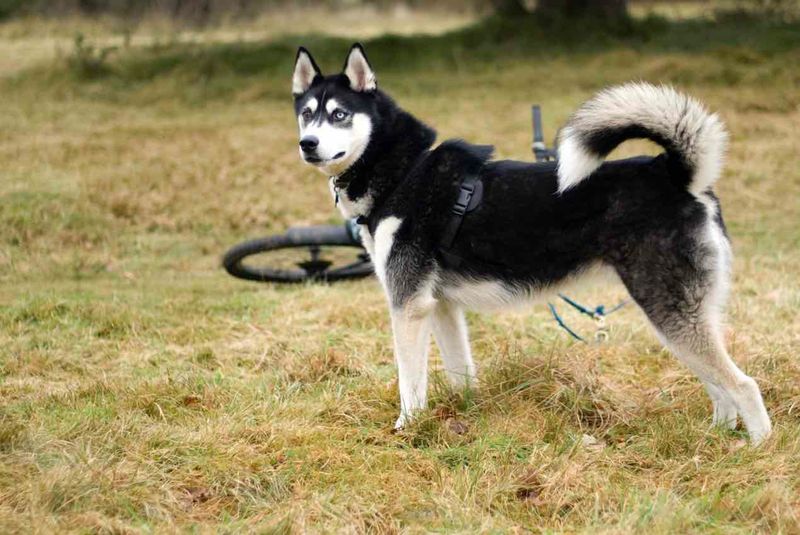
The Siberian Husky’s tail is thick, bushy, and carried high in a graceful curve over the back. It’s a hallmark of the breed’s striking appearance, complementing their wolf-like features. Huskies often use their tail to communicate with other dogs and humans, signaling excitement, happiness, or curiosity.
When in motion, the tail adds to the breed’s overall agility, especially when pulling sleds or running through snowy landscapes.

